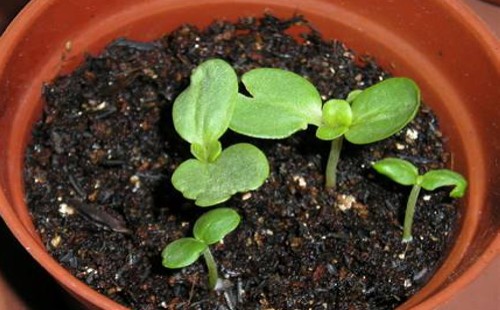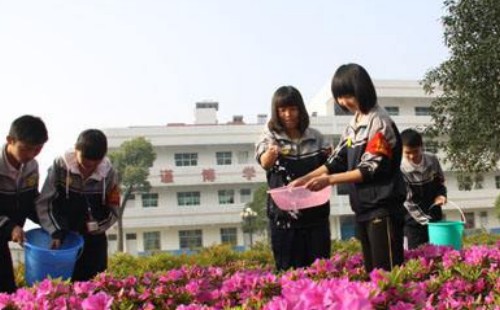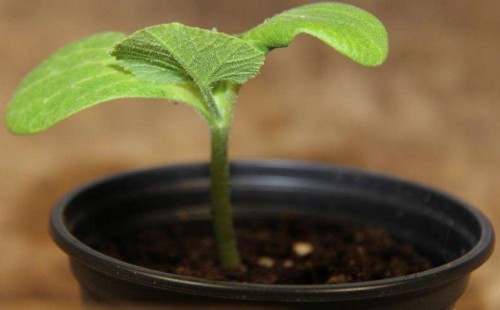The basic steps of planting flowers and plants
Potted planting of flowers and plants is a leisure way for many potted friends to spend their leisure time, but growing flowers and plants also needs to pay attention to certain methods and steps. No matter what kind of flowers and plants are planted, they should not be carried out blindly, especially in the specific steps, we should grasp every detail. Only in this way can we plant flowers and plants well, and at the same time, we can also improve our planting skills and level in constant attempts. So, what are the basic steps in the process of planting flowers and plants?

Before planting, we must first understand the species or varieties of the selected flowers and plants, but also be familiar with their growth habits, and then choose to plant at the right time and finally in the appropriate weather environment. However, even if these aspects are done, we still need to prepare the materials and other preparations needed to grow flowers and plants, especially as potted users, there is often much more to prepare. Only after we have done enough preparation can we carry out the basic planting steps, which are often crucial for novice friends.
Step 1: prepare the soil
The soil environment is the basis for the growth of flowers and plants. The first thing we need to do is to prepare the soil. Of course, if it is a potted plant, we also need to prepare the flowerpot, make the drainage layer of the basin, and then pour the soil into it to plant plants. For most flowers and plants, they tend to prefer light. If they are cultivated on the ground, they often need to choose an open space and then clean up the soil.
The soil used to grow flowers generally requires no impurities and no grass seeds, and the soil needs to be turned over to make it smaller and more delicate, which ensures that it is loose and breathable and more suitable for growing flowers. at the same time, it can also promote the growth of plants. Therefore, ploughing the soil is a very basic but very important work, and we should not be careless in the process of practice.
Step 2: breed seedlings
After the soil has been sorted out, we can then carry on the work of breeding young plants of flowers and plants. The main work can be sowing and propagation, or transplanting seedlings for cultivation. If the way of sowing is used to breed seedlings, the flower seeds are generally soaked in water for a period of time, and then sowed after the seeds are fully absorbed and swollen. The broadcast can be broadcast or on demand, and it can be decided according to the needs of the host.
After planting and sowing, we also need to cover a layer of soil with the right thickness, the original for the general seed, generally not more than 3 cm thick. The thickness of specific cover soil often needs to be considered according to the specific properties and characteristics of different flower seeds. For some flowers and plants after sowing, it is necessary to cover the seeds with plastic film to keep warm and wet, so as to ensure that the seeds can germinate and emerge smoothly.
Step 3: maintenance and management
After completing the sowing, the next thing to do is maintenance and management. Whether the seedlings grow well or not in the later stage is largely affected by whether the maintenance and management work is done or not. It can be seen that maintenance and management is often of great significance for plant growth, and even the embodiment of late flowering and fruit and ornamental value. Therefore, we can not belittle, let alone ignore the maintenance and management work.
Before the emergence of seeds, we need to provide a comfortable and suitable growth environment for seeds as far as possible, especially the management of light, temperature, water and fertilizer. Before budding, it is generally necessary to block direct sunlight and ensure that the temperature is suitable for seed germination, while watering needs to control the amount and frequency. Generally, a small amount of water can be supplied for 2-3 days to keep moisturizing. And after watering, moisturizing aids such as straw or plastic film are usually needed. After sprouting, it is necessary to provide appropriate light, while ensuring the ventilation of the environment, while replenishing water, you can also carry out appropriate topdressing.
The above aspects are the basic steps of planting flowers and plants, as long as we follow these basic operating steps and pay attention to the details, we can generally grow flowers and plants well. I hope this article will be helpful to you, and you can practice more, so that practice makes perfect and you can do it easily. At the same time, you can also learn to grow other plants by planting flowers and plants.
Time: 2019-05-23 Click:
- Prev

What kind of flowers are suitable for planting on the campus in the north?
Campus teaching, education, dissemination of knowledge places, just imagine, if our campus is like a garden, it is bound to add a lot of fun, but also cultivate sentiment. In fact, many flowers and plants are planted in many campuses in our country, which promotes the relaxation of teachers and students on campus.
- Next

What are the flowers suitable for planting in autumn
In people's eyes, autumn is not only a busy harvest season, but also a scene of fallen leaves, withering and decline. Especially for many seasonal flowers planted in pots, the flowers and leaves fall and the plants wither, which is simply unbearable. But for many flowers and plants,
Related
- Fuxing push coffee new agricultural production and marketing class: lack of small-scale processing plants
- Jujube rice field leisure farm deep ploughing Yilan for five years to create a space for organic food and play
- Nongyu Farm-A trial of organic papaya for brave women with advanced technology
- Four points for attention in the prevention and control of diseases and insect pests of edible fungi
- How to add nutrient solution to Edible Fungi
- Is there any good way to control edible fungus mites?
- Open Inoculation Technology of Edible Fungi
- Is there any clever way to use fertilizer for edible fungus in winter?
- What agents are used to kill the pathogens of edible fungi in the mushroom shed?
- Rapid drying of Edible Fungi

